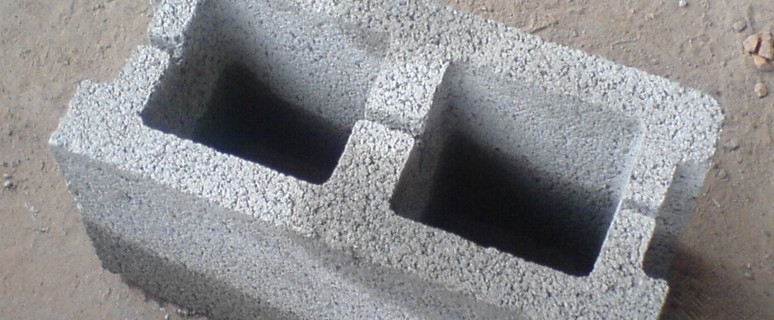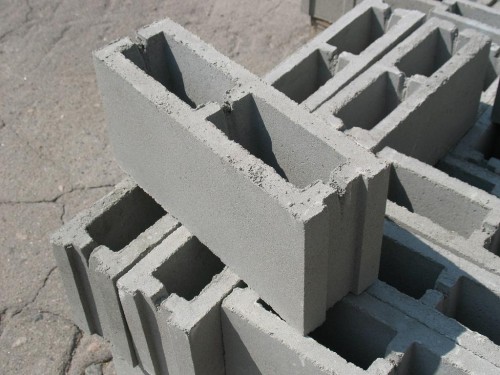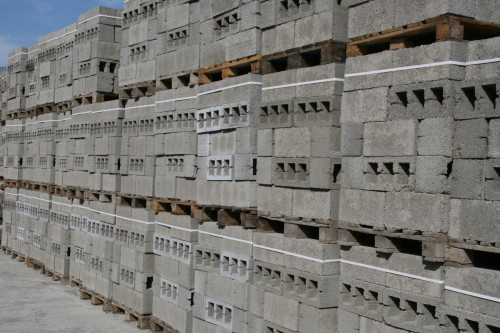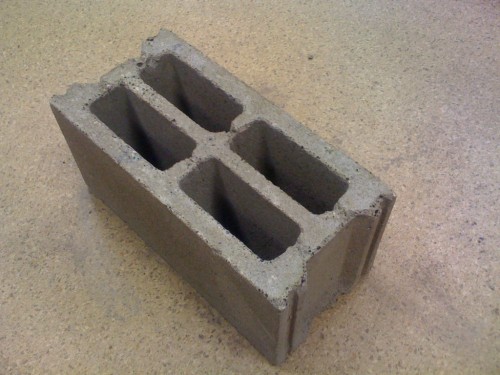
Concrete wall blocks: Characteristics and laying Building materials

Wall concrete blocks are a popular building material, which is increasingly used in the construction of small buildings, or individual partitions, walls, canopies, as well as compact buildings. The main feature of this resource is the overall simplicity of laying blocks. In most cases, a person who has not had the experience associated with construction will be able to carry out a full-fledged process.
Content
Also, wall blocks made of concrete - this is "Golden live" for manufacturers of building materials. This resource is characterized by special low cost, especially if you compare it with known counterparts. Ultimately, companies that produce similar blocks using the simplest vibropressing receive invisible profits. However, and for consumers, the cost of blocks is more than available.
Due to the large dimensions of the wall blocks, the construction process is significantly reduced. It should be borne in mind that this building material can be applied far from all cases. We will talk about the features of the use of wall blocks from concrete in this material.
Features of the wall concrete block
In most cases, the wall concrete is a hollow product that has a small weight. However, this is not a flaw, since thanks to such a feature, the material has gained a number of positive features.
First of all, the wall concrete creates high-quality thermal insulation of the room. This effect will be felt in the coolest seasons when the hollow material will carefully maintain small amounts of warm air indoors. If you combine blocks with popular thermal insulation materials, then the dwelling even at the lowest temperatures outside the window will maintain a stable temperature mode.
In addition, the use of a concrete block is a significant savings of the building material. Large elements of this product are always better than small bricks or tiny plates.
Many manufacturers also indicate that their concrete blocks are moisture-resistant. This can not boast many types of bricks. Also moisture resistance indicates that the material will demonstrate excellent resistance and lack of slightest deformations even in the regions where high humidity is the main problem for construction.
Another advantage of concrete material is the absence of any necessary surface care measures. Most often after laying blocks, the owners remain just covering the surface of the material of the paint layer. After that, concrete products becomes almost invulnerable.
Varieties of wall concrete blocks
As with any other construction products, wall blocks also have different types of performance. Often, materials are divided by density. The choice of the necessary density depends exclusively on the scale and features of construction.
The blocks of up to 600 kilograms per cubic meter are greater popular today. When buying it is best to consult with the consultants who will study the situation and give an authoritative assessment.
As for the strength of concrete blocks, it is also a very important aspect. At the same time, prices for blocks that differ in terms of strength are very different. Often experts advise you to purchase more durable material in cases where it will be used at the heart of the supporting structures. If the wall blocks will be operated exclusively as a simple fence, then you can make a choice in favor of a material with low strength.
When choosing blocks from concrete, you should also pay attention to the features of the frost-resistant material. In most cases, this product is abolished by cold, but there are exceptions. In some situations, the characteristics of the material depends exclusively from the manufacturer.
Features of masonry wall concrete blocks
As mentioned earlier, many owners make a choice in favor of wall concrete blocks because of the reason that they are much easier to store than a classic brick, and the construction process itself will be fast enough.
For blocking blocks, it will be necessary to prepare a cement solution using additional additives (the need to use only on block manufacturers). It should be borne in mind that the solution must be created immediately before the masonry process.
It is desirable to apply a solution to the surface of the blocks using a spatula, it is desirable that it has special grooves.
Cement is applied with a thin layer. The blocks themselves should be located down.
Immediately after the masonry, it is necessary to process the surface of the erected wall (partition) so that any traces of cement or other mixtures are missing. It should be traced that the seams do not have any flaws. It is often used by sandpaper, with which you can quickly remove any particle size.
If the construction, created on the basis of wall blocks, will have too large dimensions, without reinforcement it is not enough. Often this uses fine fittings that fit into each masonry row. If the reinforcement is not used, then in some cases a block of structure is possible. Of course, this refers to massive walls or partitions, when the wall blocks are erected not so often.
If only part of the large-sized block is needed during the construction, you can cut the material using a hand saw. It should be borne in mind that in this case the products may be bad. That this does not happen, you need to cut the block is not too intense, and in the presence of cracks or chips, it is better to immediately get rid of the material.
If during the masonry it was found that one of the blocks is set slightly crookedly, it can be easily corrected, but this procedure can be carried out only for 10-15 minutes after masonry. After this time, the material will extract or move no longer.






















